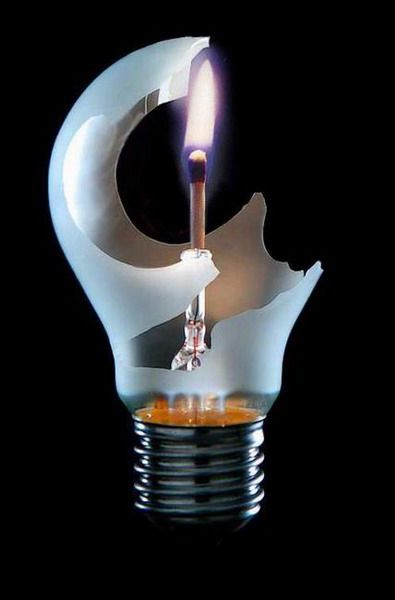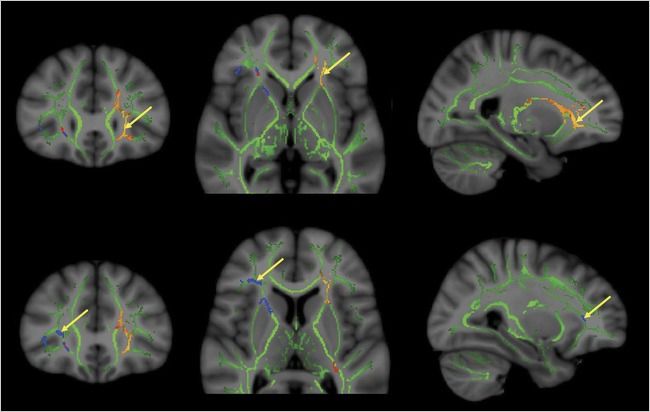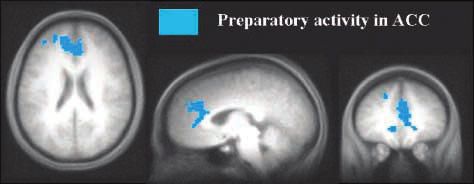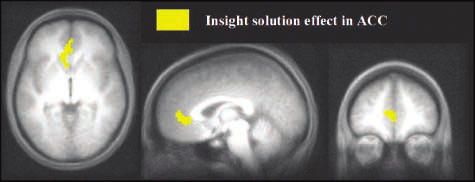Guest Post: Can Creativity Be Measured in a Laboratory?
Aug3

Scientists are becoming more interested in trying to pinpoint precisely what’s going on inside our brains while we’re engaged in creative thinking. Which brain chemicals play a role? Which areas of the brain are firing? Is the magic of creativity linked to one specific brain structure? The answers are not entirely clear. But thanks to brain scan technology, some interesting discoveries are emerging. ScriptPhD.com was founded and focused on the creative applications of science and technology in entertainment, media and advertising, fields traditionally defined by “right brain” propensity. It stands to reason, then, that we would be fascinated by the very technology and science that as attempting to deduce and quantify what, exactly, makes for creativity. To help us in this endeavor, we are pleased to welcome computer scientist and writer Ravi Singh’s guest post to ScriptPhD.com. For his complete article, please click “continue reading.”
Before you can measure something, you must be able to clearly define what it is. It’s not easy to find consensus among scientists on the definition of creativity. But then, it’s not easy to find consensus among artists, either, about what’s creative and what’s not. Psychologists have traditionally defined creativity as “the ability to combine novelty and usefulness in a particular social context.” But newer models argue that these type of definitions, which rely on extremely-subjective criteria like ‘novelty’ and ‘usefulness,’ are too vague. John Kounios, a psychologist at Drexel University who studies the neural basis of insight, defines creativity as “the ability to restructure one’s understanding of a situation in a non-obvious way.” His research shows that creativity is not a singular concept. Rather, it’s a collection of different processes that emerge from different areas of the brain.
In attempting to measure creativity, scientists have had a tendency to correlate creativity with intelligence—or at least link creativity to intelligence—probably because we believe that we have a handle on intelligence. We believe can measure it with some degree of accuracy and reliability. But not creativity. No consensus measure for creativity exists. Creativity is too complex to be measured through tidy, discrete questions. There is no standardized test. There is yet to be a meaningful “Creativity Quotient.” In fact, creativity defies standardization. In the creative realm, one could argue, there’s no place for “standards.” After all, doesn’t the very notion of standardization contradict what creativity is all about?
To test creativity, researchers have historically attempted to test divergent thinking, an assessment construct originally developed in the 1950s by psychologist J. P. Guilford, who believed that standardized IQ tests favored convergent thinkers (who stay focused on solving a core problem), rather than divergent thinkers (who go ‘off on tangents’). Guilford believed that scores on IQ tests should not be taken as a unidimensional measure of intelligence. He observed that creative people often score lower on standard IQ tests because their approach to solving the problems generates a larger number of possible solutions, some of which are thoroughly original. The test’s designers would have never thought of those possibilities. Testing divergent thinking, he believed, allowed for greater appreciation of the diversity of human thinking and abilities. A test of divergent thinking might ask the subject to come up with new and useful functions for a familiar object, such as a brick or a pencil. Or the subject might be asked to draw the taste of chocolate. You can see how it would be very difficult, if not impossible to standardize a “correct” answer.
Eastern traditions have their own ideas about creativity and where it comes from. In Japan, where students and factory workers are stereotyped as being too methodical, researchers are studying schoolchildren for a possible correlation between playfulness and creativity. Nath philosopher Mahendranath wrote that man’s “memory became buried under the artificial superstructure of civilization and its artificial concepts,” his way of saying that that too much convergent thinking can inhibit creativity. Sanskrit authors described the spontaneous and divergent mental experience of sahaja meditation, where new insights occur after allowing the mind to rest and return to the natural, unconditioned state. But while modern scientific research on meditation is good at measuring physiological and behavioral changes, the “creative” part is much more elusive.

Some western scientists suggest that creativity is mostly ascribed to neurochemistry. High intelligence and skill proficiency have traditionally been associated with fast, efficient firing of neurons. But the research of Dr. Rex Jung, a research professor in the department of neurosurgery at the University of New Mexico, shows that this is not necessarily true. In researching the neurology of the creative process, Jung has found that subjects who tested high in “creativity” had thinner white matter and connecting axons in their brains, which has the effect of slowing nerve traffic. Jung believes that this slowdown in the left frontal cortex, a brain region where emotion and cognition are integrated, may allow us to be more creative, and to connect disparate ideas in novel ways. Jung has found that when it comes to intellectual pursuits, the brain is “an efficient superhighway” that gets you from Point A to Point B quickly. But creativity follows a slower, more meandering path that has lots of little detours, side roads and rabbit trails. Sometimes, it is along those rabbit trails that our most revolutionary ideas emerge. You just have to be willing to venture off the main highway.
We’ve all had aha! moments—those sudden bursts of insight that solve a vexing problem, solder an important connection, or reinterpret a situation. We know what it is, but often, we’d be hard-pressed to explain where it came from or how it originated. Dr. Kounios, along with Northwestern University psychologist Mark Beeman, has extensively studied the the “Aha! moment.” They presented study participants with simple word puzzles that could be solved either through a quick, methodical analysis or an instant creative insight. Participants are given three words then are asked to come up with one word that could be combined with each of these three to form a familiar term; for example: crab, pine and sauce. (Answer: “apple.”) Or eye, gown and basket. (Answer: ball)

Regions of the brain lighting up in people who "thought about" the answers to a creativity puzzle.

Regions of the brain lighting up for people who had "Aha!" moments to the creativity puzzle.
About half the participants arrived at solutions by methodically thinking through possibilities; for the other half, the answer popped into their minds suddenly. During the “Aha! moment,” neuroimaging showed a burst of high-frequency activity in the participants’ right temporal lobe, regardless of whether the answer popped into the subjects’ minds instantly or they solved the problem methodically. But there was a big difference in how each group mentally prepared for the test question. The methodical problem solvers prepared by paying close attention to the screen before the words appeared—their visual cortices were on high alert. By contrast, those who received a sudden Aha! flash of creative insight prepared by automatically shutting down activity in the visual cortex for an instant—the neurological equivalent of closing their eyes to block out distractions so that they could concentrate better. These creative thinkers, Kounios said, were “cutting out other sensory input and boosting the signal-to-noise ratio” to enable themselves retrieve the answer from the subconscious.
Creativity, in the end, is about letting the mind roam freely, giving it permission to ignore conventional solutions and explore uncharted waters. Accomplishing that requires an ability, and willingness, to inhibit habitual responses, take risks. Dr. Kenneth M. Heilman, a neurologist at the University of Florida believes that this capacity to let go may involve a dampening of norepinephrine, a neurotransmitter that triggers the fight-or-flight alarm. Since norepinephrine also plays a role in long-term memory retrieval, its reduction during creative thought may help the brain temporarily suppress what it already knows, which paves the way for new ideas and discovering novel connections. This neurochemical mechanism may explain why creative ideas and Aha! moments often occur when we are at our most peaceful, for example, relaxing or meditating.
The creative mind, by definition, is always open to new possibilities, and often fashions new ideas from seemingly irrelevant information. Psychologists at the University of Toronto and Harvard University believe they have discovered a biological basis for this behavior. They found that the brains of creative people may be more receptive to incoming stimuli from the environment that the brains of others would shut out through the the process of “latent inhibition,” our unconscious capacity to ignore stimuli that experience tells us are irrelevant to our needs. In other words, creative people are more likely to have low levels of latent inhibition. The average person becomes aware of such stimuli, classifies it and forgets about it. But the creative person maintains connections to that extra data that’s constantly streaming in from the environment and uses it.
Sometimes, just one tiny stand of information is all it takes to trigger a life-changing “Aha!” moment.
Ravi Singh is a California-based IT professional with a Masters in Computer Science (MCS) from the University of Illinois. He works on corporate information systems and is pursuing a career in writing.
*****************
ScriptPhD.com covers science and technology in entertainment, media and advertising. Hire our consulting company for creative content development.
Follow us on Twitter and our Facebook fan page. Subscribe to free email notifications of new posts on our home page.


















12:29 pm on August 27th, 2010
Outstanding article! I think that if science “reverse engineers” the formula for inspiration or creativity, it would take away the magic of what makes us human. Science may be able to measure creativity to some degree, but I doubt it will ever be able to clone or mass produce human inspiration.
4:30 pm on August 27th, 2010
Indeed, one can have all the right brain chemicals and a meditative outlook yet still be a crushing dullard. Stephen King said it best: “Talent is as cheap as table salt; what really makes for success is a ton of hard work.”
9:32 pm on August 27th, 2010
I’m in need of an “Aha!” moment – almost every day.